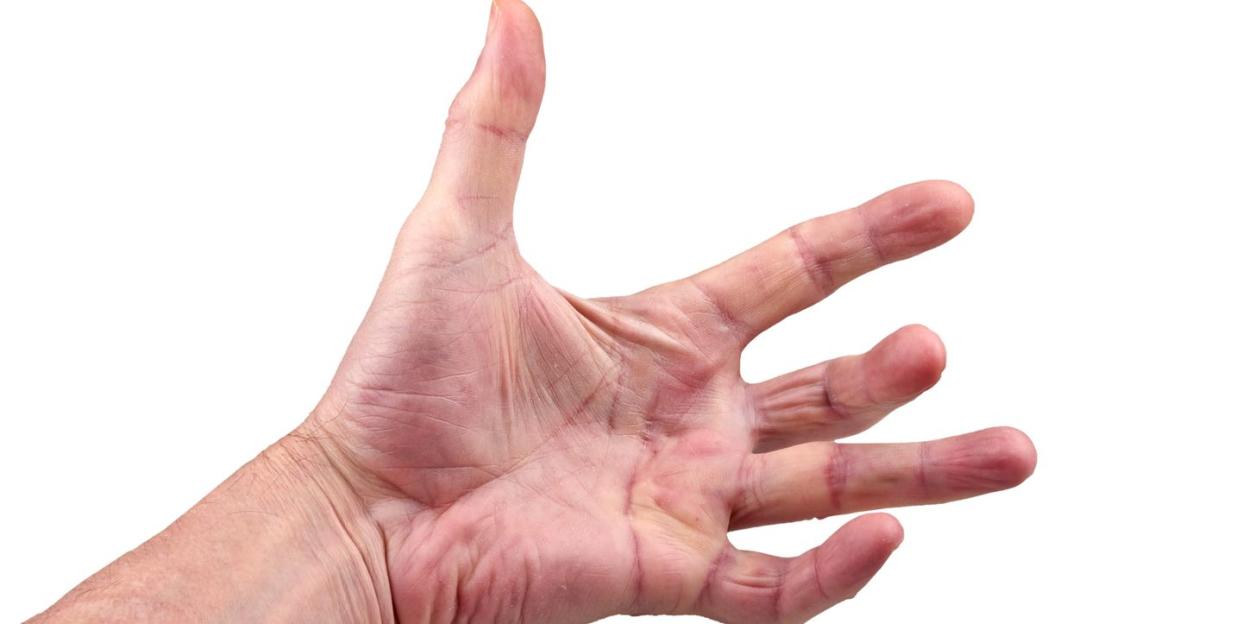If You Have the Hand Disorder Called 'Viking Disease,' Blame Your Neanderthal DNA

The hand disorder called Dupuytren’s disease—also known as Viking disease—may be linked to Neanderthal genes embedded in human DNA.
The disorder permanently bends fingers into flexed positions, and seems to have a strong genetic influence.
This adds the disease to a list of human traits likely linked to ancient genetic variants.
A new research study suggests that the hand disorder Dupuytren’s disease is at least partly of Neanderthal origin, while also warning we shouldn’t make too much of the Neanderthal-Viking connection. The hand disease—dubbed Viking disease—has a strong hereditary cause, and is mostly found in those of Northern European descent.
Published in Molecular Biology and Evolution by Oxford University Press, the new paper ties Dupuytren’s disease to Neanderthals through the use of data gathered from modern-day humans. And that means Neanderthal genes have a greater influence on human DNA (especially in those of Northern European descent) than was previously known.
The disease itself affects the hand, causing fingers—most commonly the ring and middle—to be bent permanently in a flexed position. While age, alcohol consumption, and diabetes are listed as risk factors, past studies, including one from Denmark carried out in 1999, show that heritability is the most important aspect. As much as 80 percent of the overall risk factor could be genetic.
The condition is common in those of Northern European ancestry—Norwegians over 60 years of age have a 30 percent chance of acquiring the disease—and is rare for those of primarily African descent. It’s not difficult to see where the nickname “Viking disease” comes from.
The new research extracted data from the UK Biobank, the FinnGen R7 collection, and the Michigan Genomics Initiative to find “61 genome-wide significant variants associated with Dupuytren’s disease,” according to a news release. “Further analysis showed that three of these variants are of Neanderthal origin, including the second and third most strongly associated ones.”
This all led the scientists to concludes that the most important genetic risk factor for Dupuytren’s disease is the lingering role of Neanderthal ancestry. Neanderthal’s were last seen more than 40,000 years ago, but remnant of their genetics in human DNA still play a key role in explaining the prevalence of the disease in Europe.
“This is a case where the meeting with Neanderthals has affected who suffers from illness,” Hugo Zeberg, professor at the Karolinska Institutet in Sweden and the paper’s lead author, says in a news release, “although we should not exaggerate the connection between Neanderthals and Vikings.”
That said, genetic ancestry continually links humans regionally to now-extinct groups. Those from south of the Sahara in Africa have little ancestry from Neanderthals or Denisovans (another extinct relative of humans), while the authors say that those who lived outside of Africa inherited as much as 2 percent of their genome from Neanderthals. Some populations in Asia have up to 5 percent Denisovan ancestry.
“Given these regional differences, archaic gene variants can contribute to characteristics of diseases found primarily in certain populations,” the authors say. That seems to be true—for better or worse. Past studies have traced traits ranging from thicker hair and skin to diabetes and Crohn’s disease back to those variants. Add Viking disease to the list.
You Might Also Like
